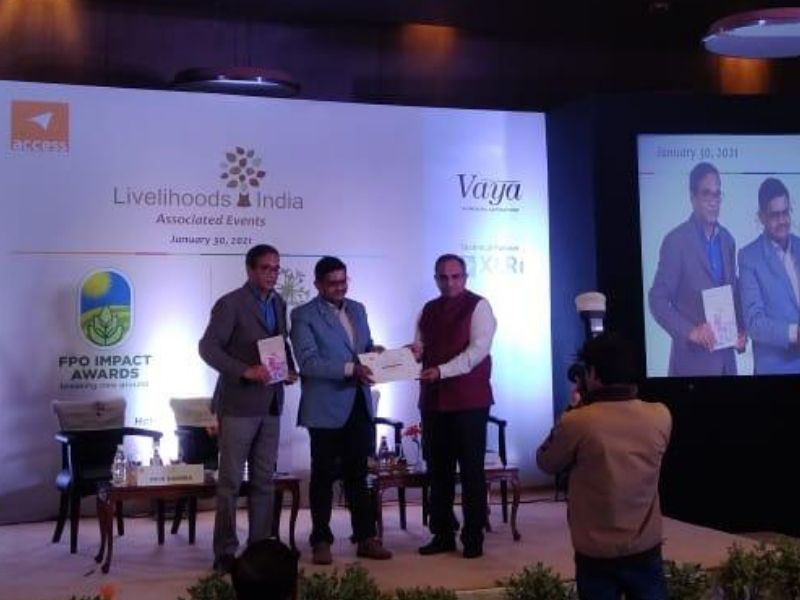A five-year-long women empowerment and livelihood intervention from SOS Children’s Villages of India tripled the monthly income and the social status of several Extremely Backward Caste and Scheduled Caste women of Kamruddinpur, a village in Begusarai District of Bihar. The case story titled, ‘Empowering women leads to economic development – Alleviating poverty through collective effort capturing this outcome has been adjudged among the top 10 livelihood development case stories in India by the prestigious ‘Sitaram Rao Livelihoods India Case Study Competition 2021’, a national-level initiative to collate the best models of livelihoods’ promotion in the country.
Conceived under the SOS Children’s Villages’ flagship Family Strengthening Programme, a community outreach model to build capacity of vulnerable families in order to uphold quality childcare for their children, the Kamruddinpur project consisted of providing livelihood training, forming self-help group (christened as Dhanwanti), and facilitating the reach of welfare schemes of the government to the villagers.
The highlights of the programme were: increase in the monthly income of women from Rs 2,500-Rs 3,000 in 2013, prior to the launch of the programme, to Rs. 9,700 at present; access to microcredit at low interest; improved social participation and recognition; access to various welfare schemes from the Central and State governments, and better nutrition and education of children, who belong to these families, among others.
Commenting about the recognition of the Kamruddinpur case story, Sumanta Kar, Senior National Deputy Director, SOS Children’s Villages of India, said, “It gives us immense satisfaction to know that impact of our intervention in Begusarai, as part of the Family Strengthening Programme is getting recognized as one of the top 10 case stories in developing livelihood opportunities for the vulnerable communities. Since our programme is something that can – and should – be replicated in many disadvantaged communities in the country. I hope the case story inspires civil society, government and the private sector for coming together to transform lives of weaker sections of the society by strengthening the smallest unit- family through empowering women as primary caregivers and preventing their children from losing parental care.”
He said that the beneficiaries were illiterate women from the Below Poverty Line families living in a village known for its feudalist ideology and patriarchal dominance, and more importantly, their children, who were deprived of quality care and upbringing. We believe that empowering women in households heralds quality childcare and upbringing for their children and hence we work towards their upliftment.
These women were working in agriculture farms for meager daily wages. Our intervention involved training them to gain basic literacy and awareness. We organized activities for them to open up and discuss their issues and challenges. These interactions enabled them to learn the importance of savings, education, health, hygiene, and nutrition of their children. It also led to the formation of the Dhanwanti Self Help Group in 2013 with 13 women who chipped in Rs 50 each. SOS Children’s Villages made a small contribution by creating a fund that can be used for extending microcredit to the members of the SHG at a low rate of interest. Within about a year and a half, the corpus of the revolving fund increased enough to fund income-generating activities such as cow rearing.
“We trained them in bookkeeping, maintaining ledger and other ways of managing finance on one hand, and in communication and conflict management on the other hand. On the livelihood front, the women enhanced their understanding of raising livestock, an area they already had some amount of exposure to. But more importantly, they were taught how to assess the fat content of the milk, and how to fix price based on fat content. We also facilitated market linkages for selling their milk. All these sustained efforts on women empowerment and livelihood training helped them more than triple their monthly income – from Rs 2,500- Rs 3,000 in 2013 to Rs.8,000 – Rs 10,000 today. Thanks to the regular inter-loaning and prompt repayment, the corpus of their SHG has increased to Rs 2.66 lakhs now – from about Rs. 650 in 2013.”
The SHG is currently linked with National Urban Livelihood Mission, and the members now make use of various social security schemes such as Rajiv Gandhi Urban Electrification Scheme, Swachh Bharat Mission and UjjawalaYojna that improve the overall living conditions of their families.
He further added, “SOS CV India we will be supporting 8000 more children under this programme in 2021 and the caregivers will be getting support for various Income Generating activities. This will help many families, who have lost livelihood due to Covid-19 to build sustainable livelihoods and prevent abandonment of children.”
